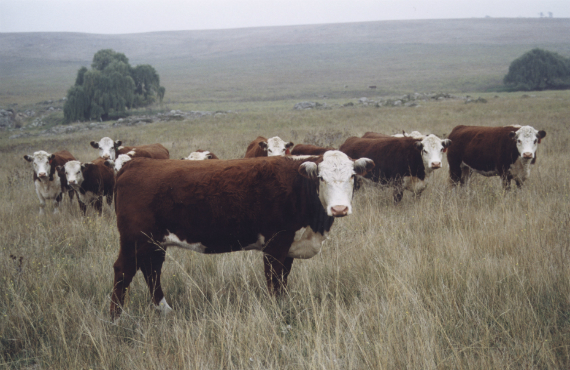
What to consider when agisting livestock
29 Jan 2018

Livestock producers are reminded to consider biosecurity precautions before agisting stock at this time of the year.
NSW Department of Primary Industries Beef Development Officer, Todd Andrews said the extremely dry conditions in areas across the state have resulted in many producers facing stock feed and water shortages, prompting the need for agistment.
“It is important for producers seeking agistment to check with the landholder if there are any pests and diseases that stock might encounter at the new location,” Mr Andrews said.
“For example, stock heading to areas with buffalo flies might need an insecticidal ear tag or other preventative treatment.
“Local Land Services vets can answer questions about the risks from diseases such as akabane and pestivirus to pregnant cows.”
Mr Andrews said producer also needed to consider the risk of weed spread to and from properties involved with agisting livestock.
“Weeds that can attach to the animals, such as African lovegrass, serrated tussock and especially Chilean needlegrass can be identified via prior inspection,” he said.
“It is necessary to keep animals in quarantine paddocks and to look out for new plant incursions after the stock returns to the home property.
“Before agistment, it is important that stock are up to date on all the usual vaccinations.”
Producers need to transfer cattle on the National Livestock Identification System (NLIS) database if they move to a different Property Identification Code (PIC).
Mr Andrews said many producers would identify a core group of animals that they would like to keep and see agistment as being the most cost effective way to maintain stock.
“Currently some areas of the Northern Tablelands are experiencing bumper pasture conditions, so there are also opportunities producers should be aware of when agisting stock at this time of year,” he said.
“On the positive side, most pastures are fairly mature by now, so there is less risk of nutritional diseases caused from drought hungry stock grazing on pasture that is a lot richer than what they were previously feeding on.
“Some of the challenges are that weight gains are likely to be a little lower and with pasture growth to slow considerably by March-April, there will be minimal opportunity for cattle to put on weight.
“Also producers should consider the potential for prices to decline prior to winter, if they are forced to sell at that time.
“For those producers with an excess of feed at the moment, the current high demand for agistment represents an excellent opportunity to generate cash flow without the risk of exposure to price changes or the cost of buying stock.”
Media contact: Anne Brook (02) 6763 1163 or 0477 358 305

